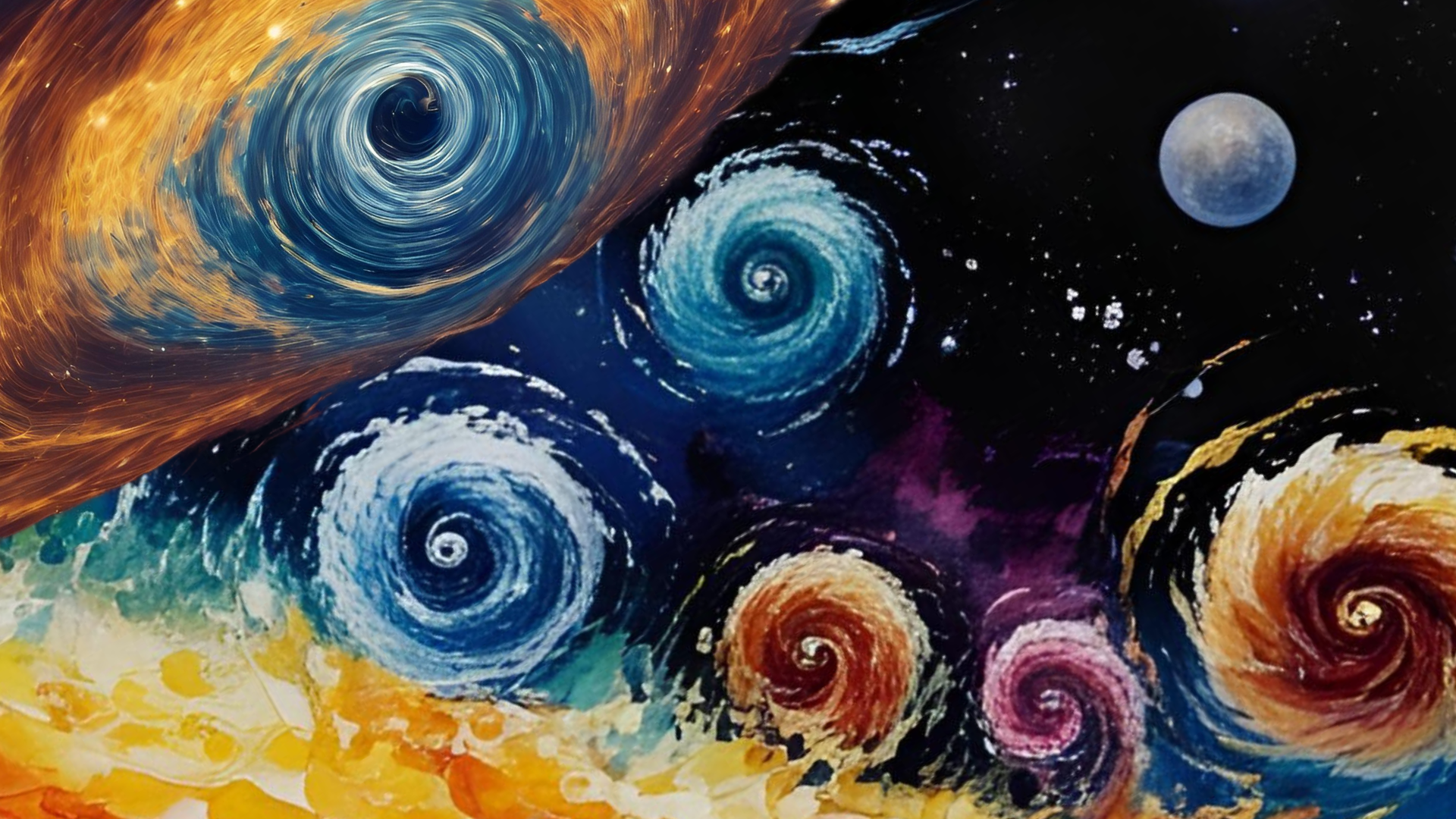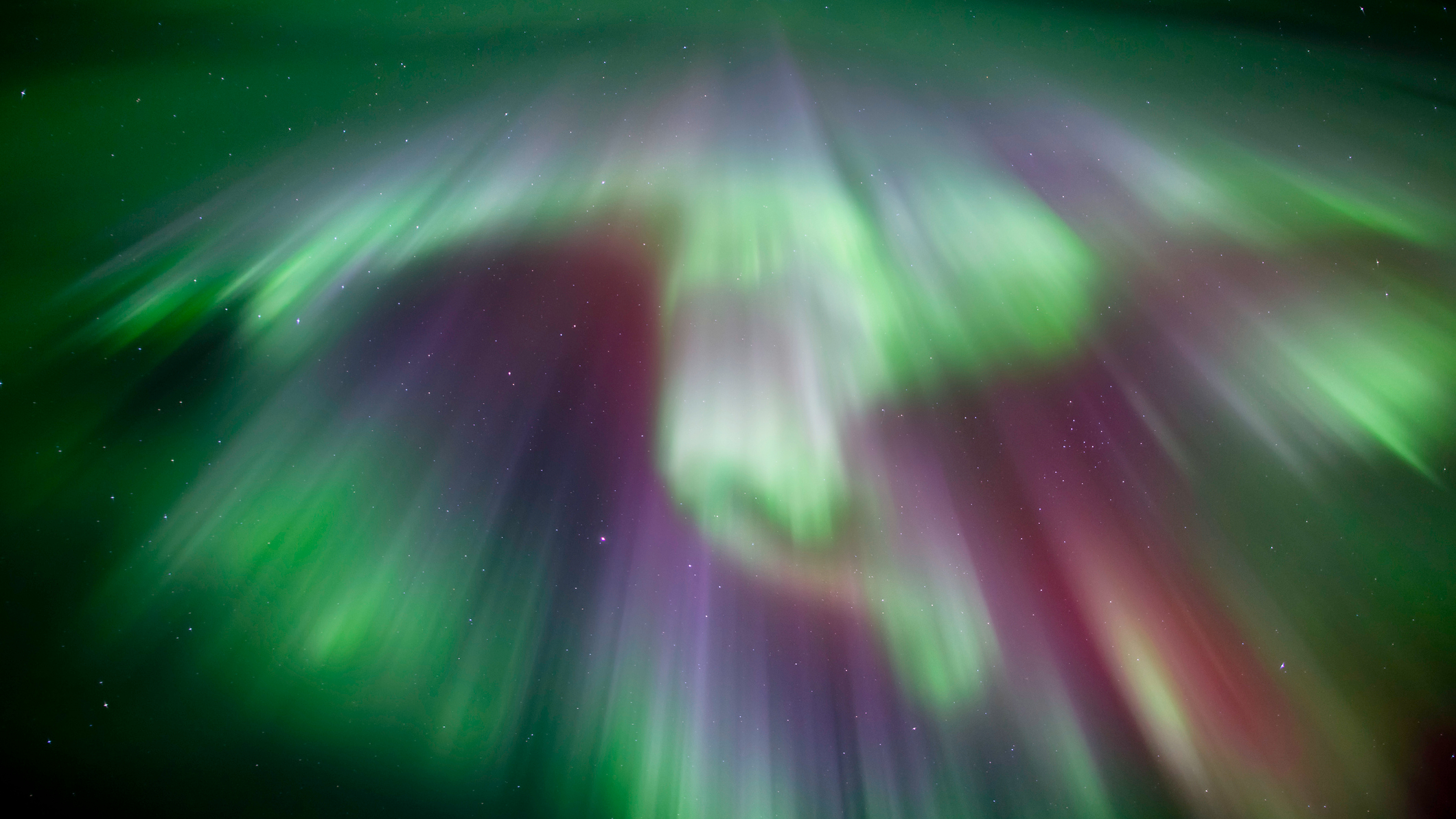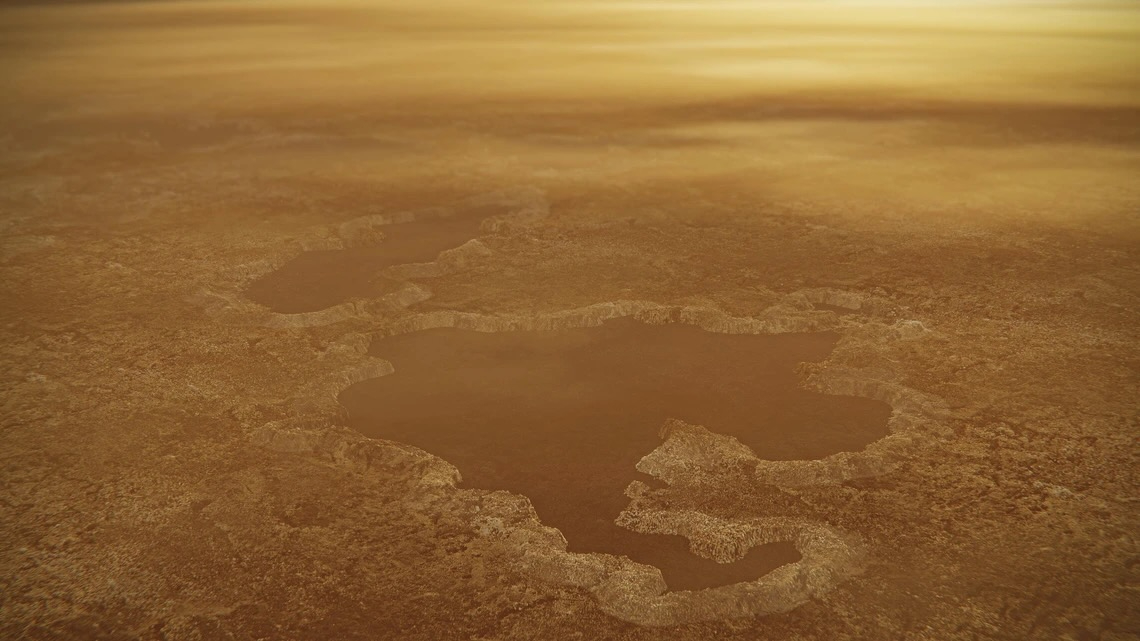China's rover maps 1,000 feet of hidden 'structures' deep below the dark side of the moon
Scientists were able to visualize the upper 1,000 feet of the moon's surface for the first time. Their results reveal billions of years of previously hidden lunar history.
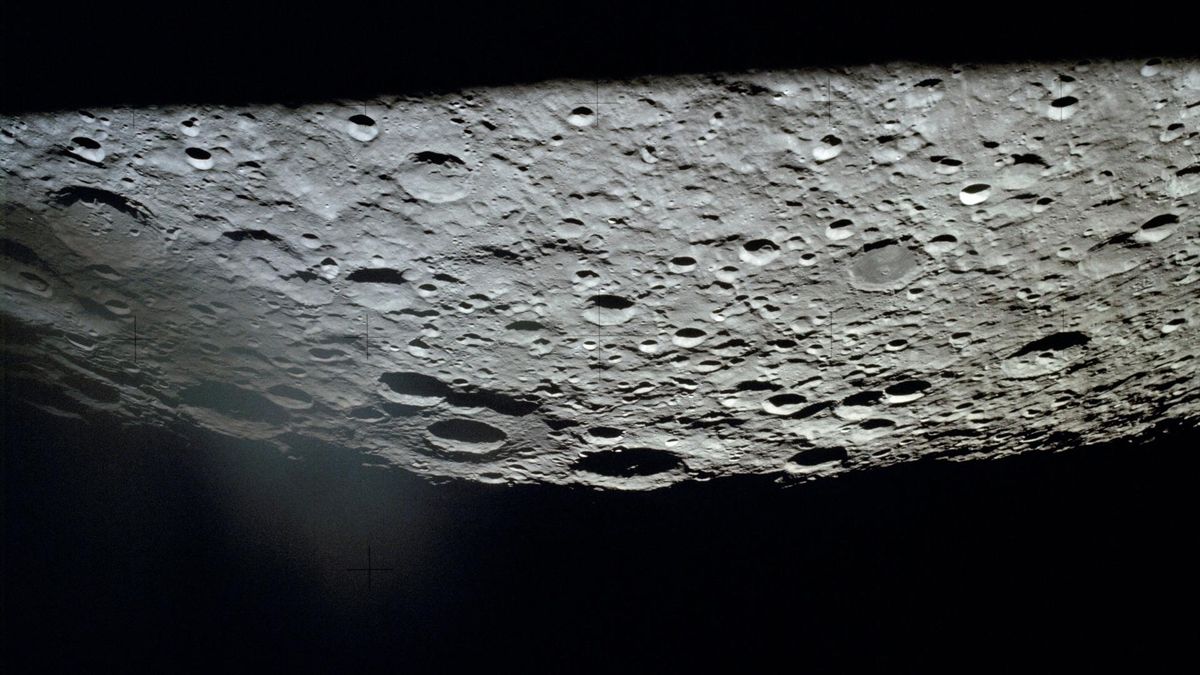
Since it first landed in 2018, China's Chang'e-4 — the first spacecraft to ever land on the far side of the moon — has been taking stunning panoramas of impact craters and sampling minerals from the moon's mantle. Now, the spacecraft has enabled scientists to visualize the layer cake of structures that comprise the upper 1,000 feet (300 meters) of the moon's surface in finer detail than ever before.
Their results, which were published Aug. 7 in the Journal of Geophysical Research: Planets, reveal billions of years of previously hidden lunar history.
A rover that traveled aboard Chang'e-4, named Yutu-2, is equipped with a technology called Lunar Penetrating Radar (LPR). This device enables the rover to send radio signals deep into the moon's surface, said lead study author Jianqing Feng, an astrogeological researcher at the Planetary Science Institute in Tucson, Arizona. "Then, it listens to the echoes dancing back," Feng told Live Science. Scientists can use those "echoes," or radio waves that bounce off of underground structures, to create a map of the lunar subsurface. In 2020, scientists used Yutu-2’s LPR to map the upper 130 feet (40 m) of the moon's surface — but hadn't gone deeper until now.
Related: Radio telescope on moon's far side will peer into universe's 'Dark Ages'
These new data suggest the top 130 feet of the lunar surface are made up of multiple layers of dust, soil, and broken rocks, Feng said. Hidden within these materials was a crater, formed when a large object slammed into the moon. Feng and his colleagues hypothesized that the rubble surrounding this formation was ejecta — debris from the impact. Farther down, the scientists discovered five distinct layers of lunar lava that seeped across the landscape billions of years ago.
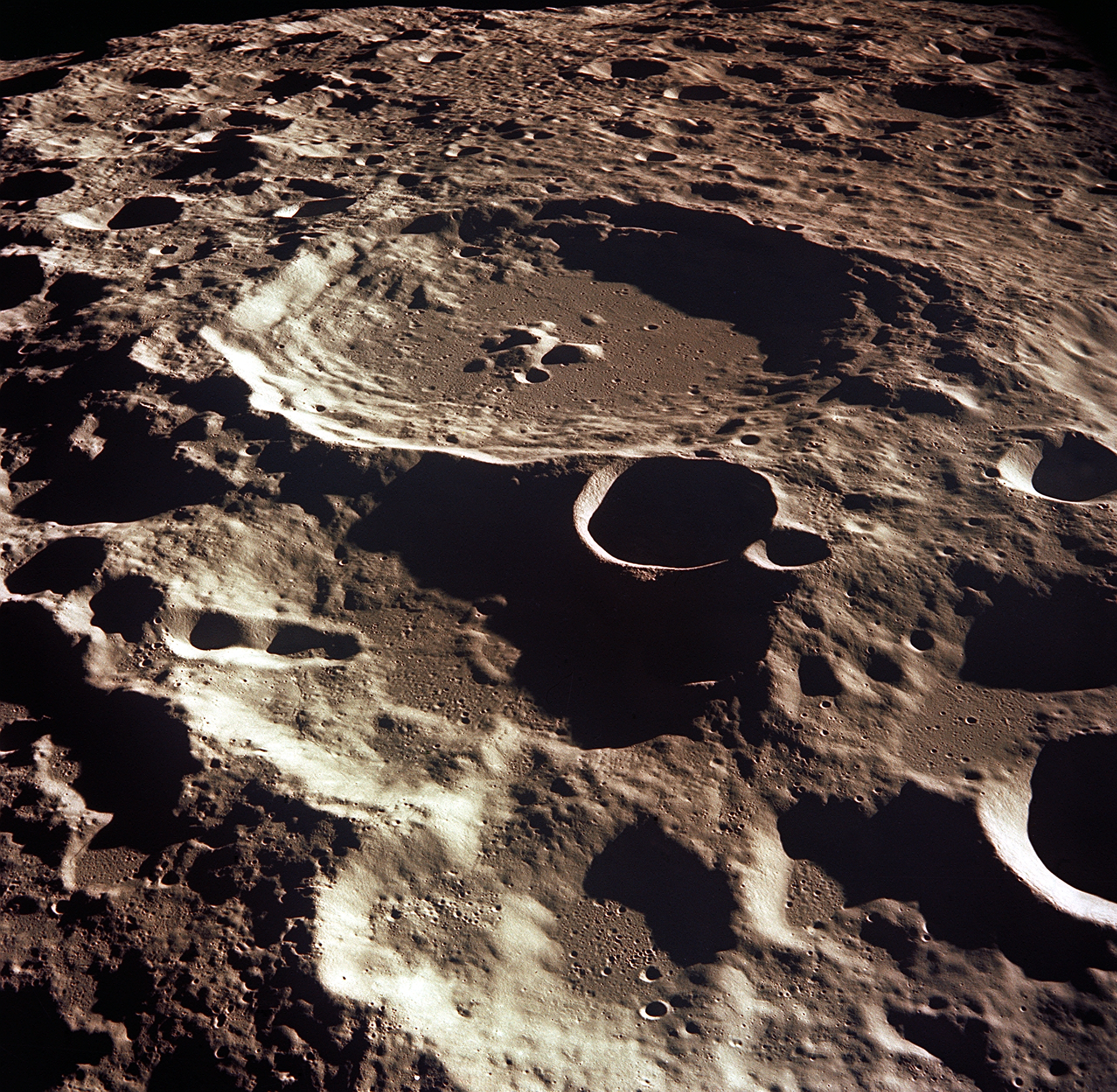
Scientists think our moon formed 4.51 billion years ago, not long after the solar system itself, when a Mars-size object slammed into Earth and broke off a chunk of our planet The moon then continued to be bombarded by objects from space for roughly 200 million years. Some impacts cracked the moon's surface. Like Earth, the moon’s mantle at that time contained pockets of molten material called magma, which seeped out through the newly formed cracks in a series of volcanic eruptions, Feng said.
The new data from Chang'e-4 shows that process slowing down over time: Feng and his colleagues found that the layers of volcanic rock grew thinner the closer they were to the moon's surface. This suggests that less lava flowed in later eruptions compared with earlier ones. "[The moon] was slowly cooling down and running out of steam in its later volcanic stage," Feng said. "Its energy became weak over time."
Get the Space.com Newsletter
Breaking space news, the latest updates on rocket launches, skywatching events and more!
Volcanic activity on the moon is thought to have petered out about 1 billion years ago (though scientists have discovered some evidence of younger volcanic activity as recently as 100 million years ago). For this reason, the moon is often considered "geologically dead." However, there could still be magma deep underneath the lunar surface, Feng said.
Chang'e-4 isn't done with its work on the moon yet. Feng hopes that in the future, the craft will give us insight into different, unexpected geological formations.
This story was originally published on Live Science.
Join our Space Forums to keep talking space on the latest missions, night sky and more! And if you have a news tip, correction or comment, let us know at: community@space.com.

Isobel Whitcomb is a contributing writer for Live Science who covers the environment, animals and health. Her work has appeared in the New York Times, Fatherly, Atlas Obscura, Hakai Magazine and Scholastic's Science World Magazine. Isobel's roots are in science. She studied biology at Scripps College in Claremont, California, while working in two different labs and completing a fellowship at Crater Lake National Park. She completed her master's degree in journalism at NYU's Science, Health, and Environmental Reporting Program. She currently lives in Portland, Oregon.
-
lhumbird ..."below the dark side of the moon" Are you kidding me? This is Space.com. You should know better than using the name of a popular 70's prog-rock album to describe the "far side of the moon"!Reply -
JMB Hey I gotta ask WHY we've never gone here before??Reply
Did they think it would be all the same or too much lighting required to work rovers.??. -
Lara Ive never understood this: wouldn't rock be less dense than magma, because magma is basically super hot liquid that's been compressed so how... if the crust gets cracked why does magma come through it? If you crack something that's extremely buoyant the liquid it's floating on doesn't seep through the crack it just is below it??Reply

